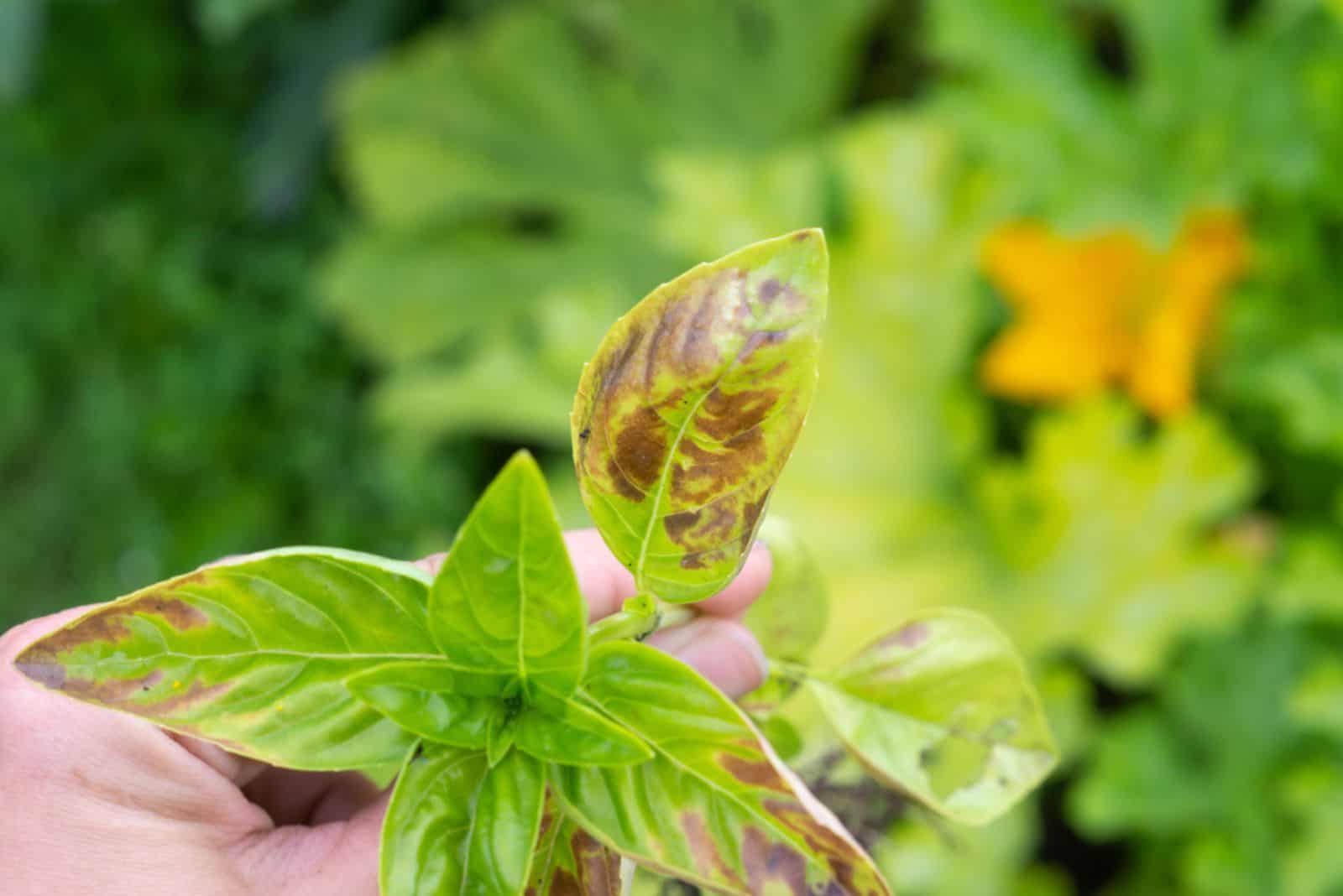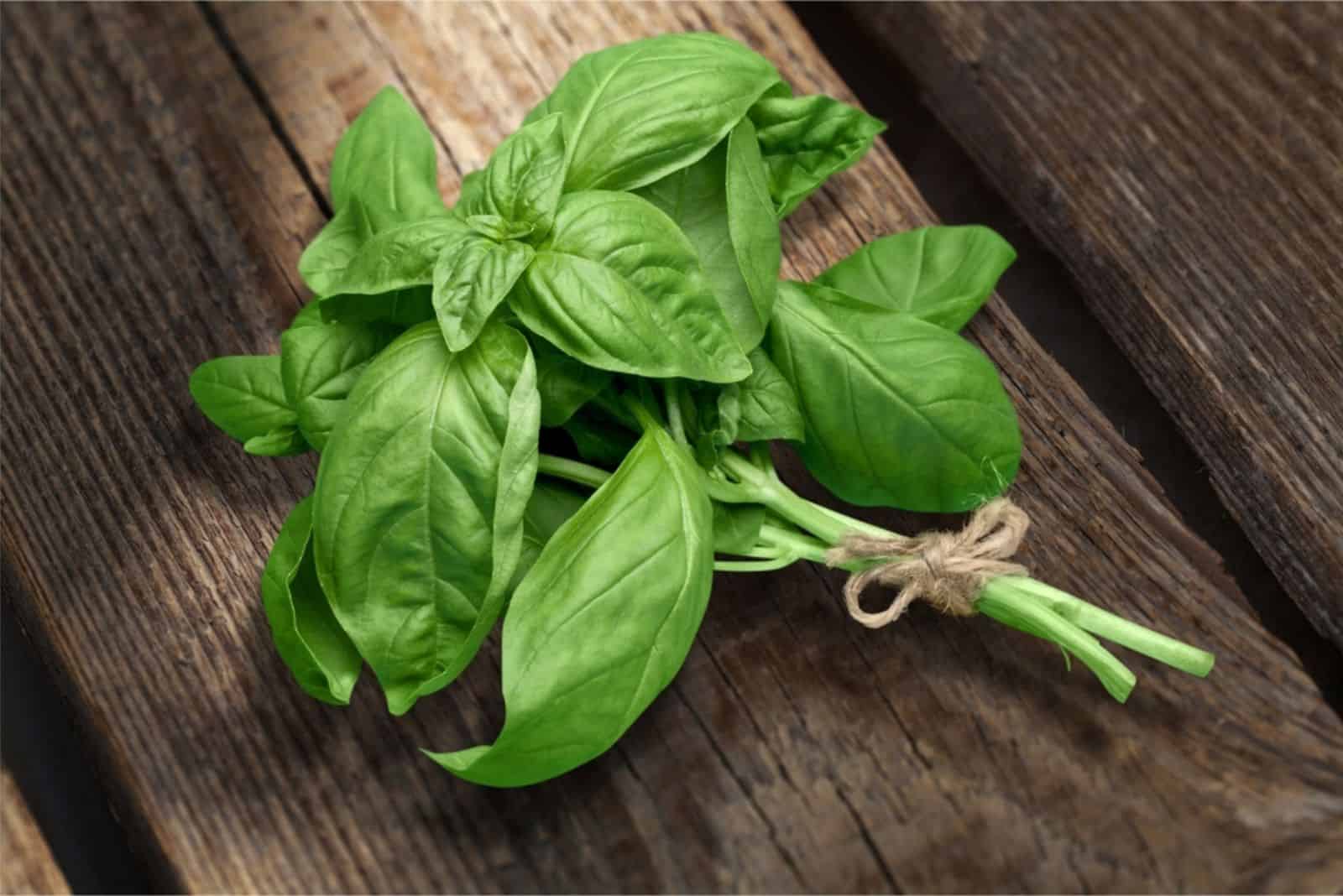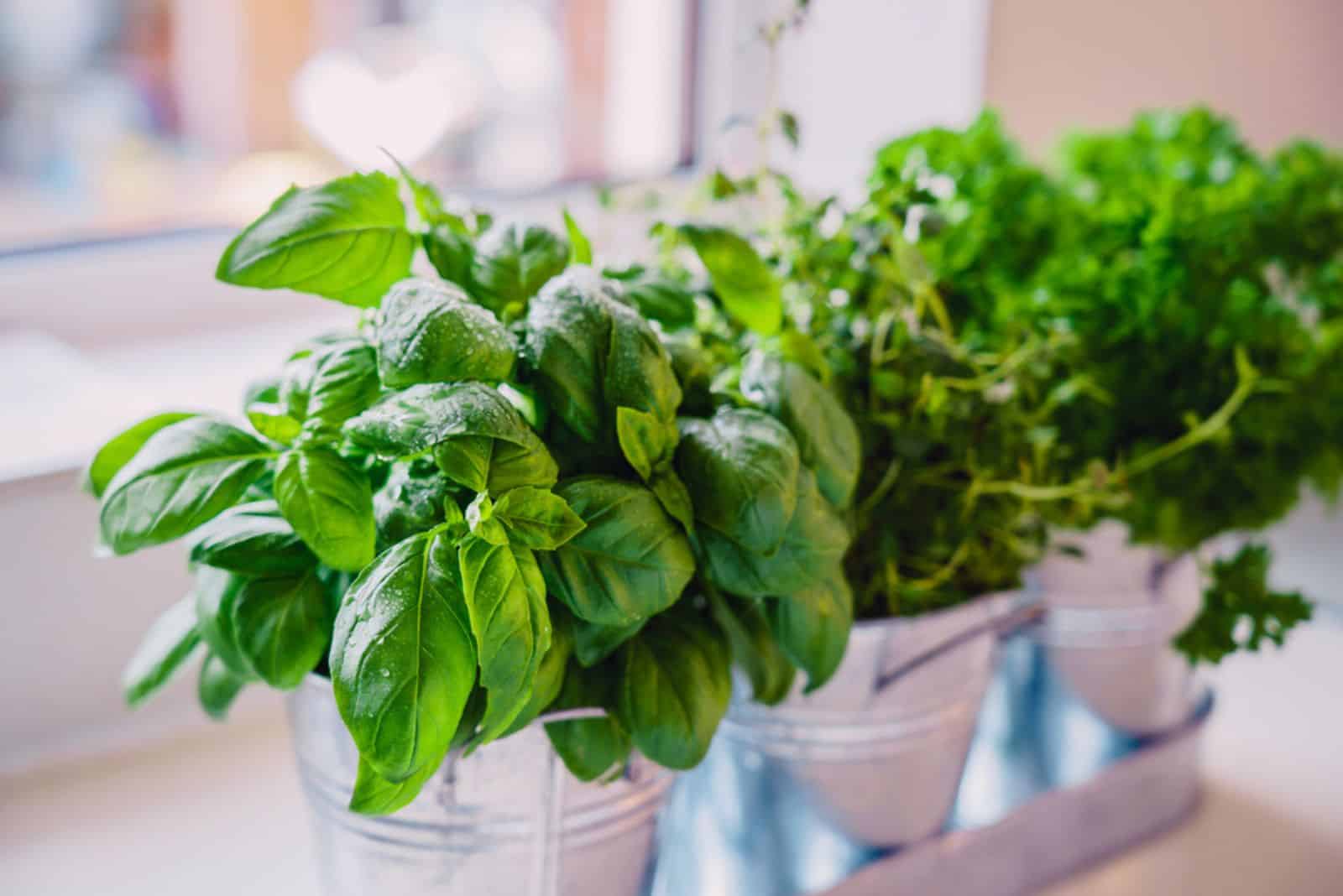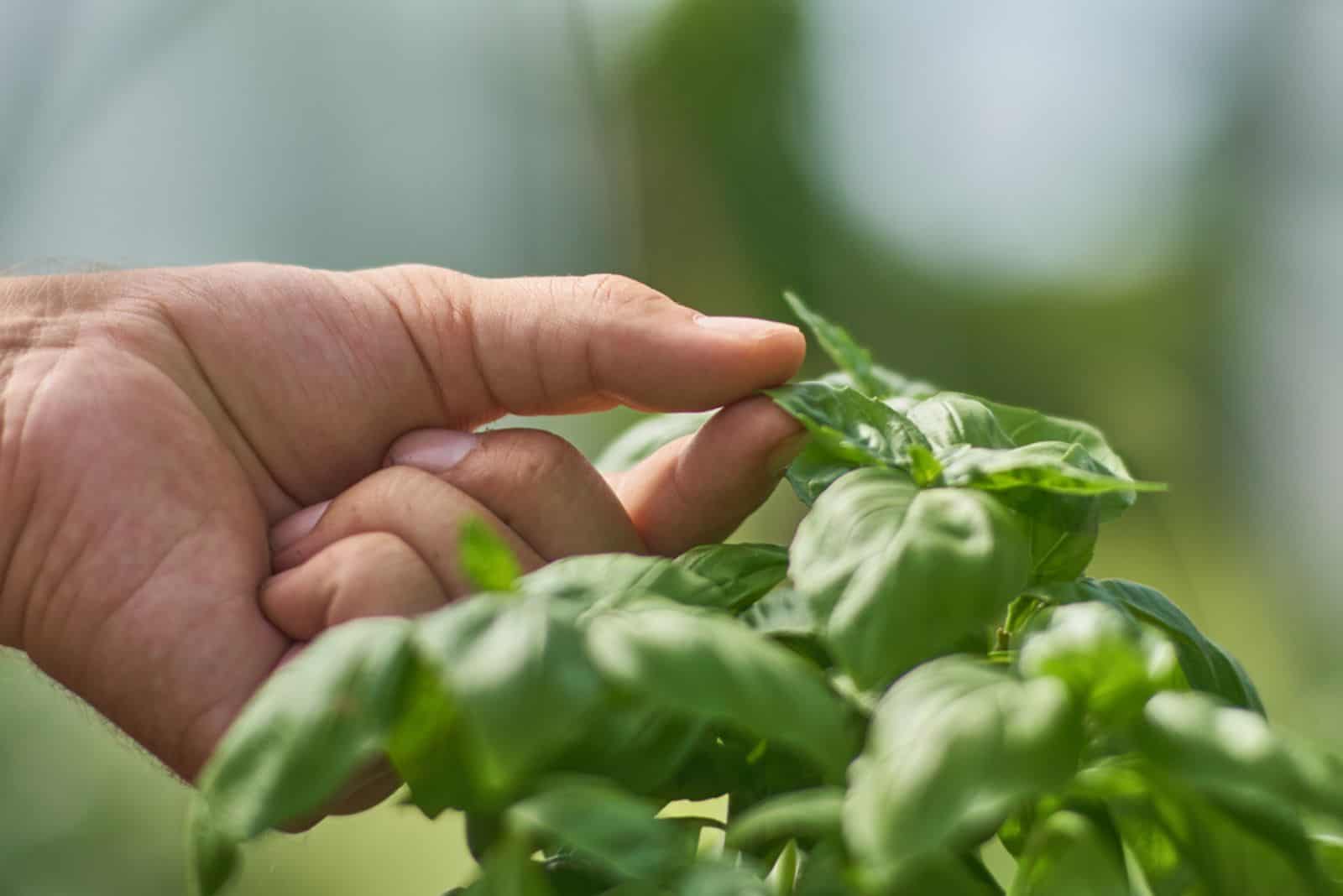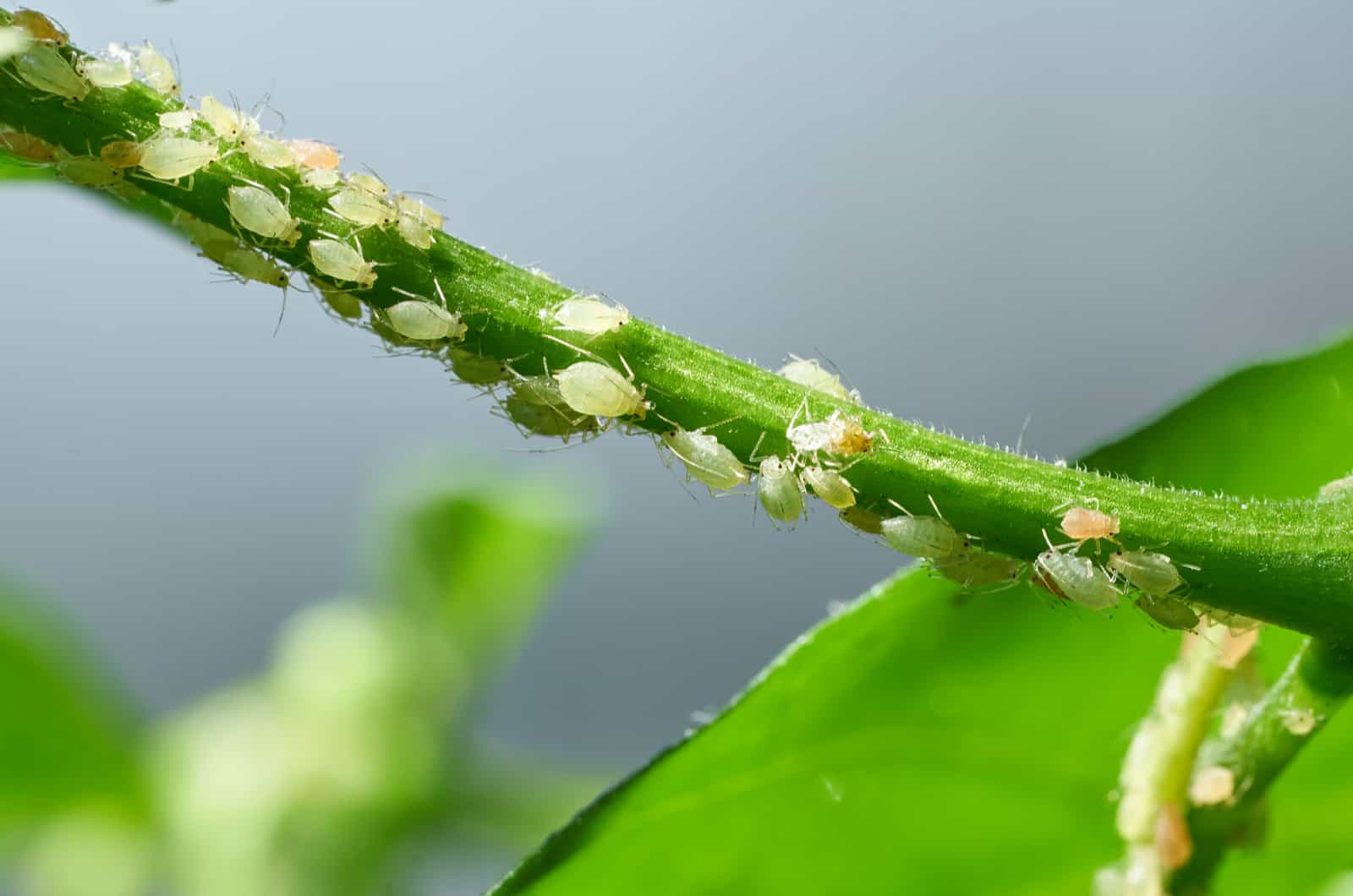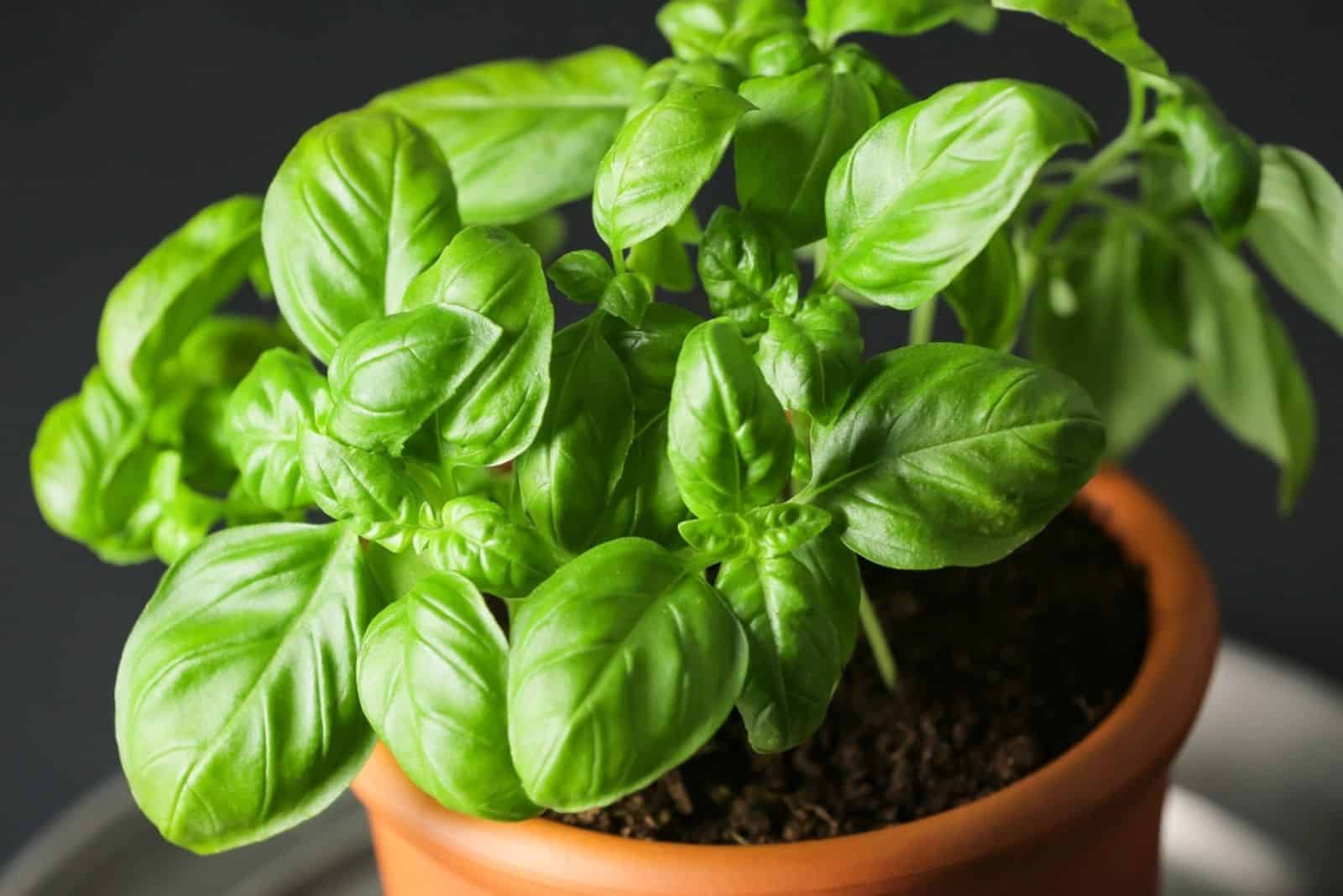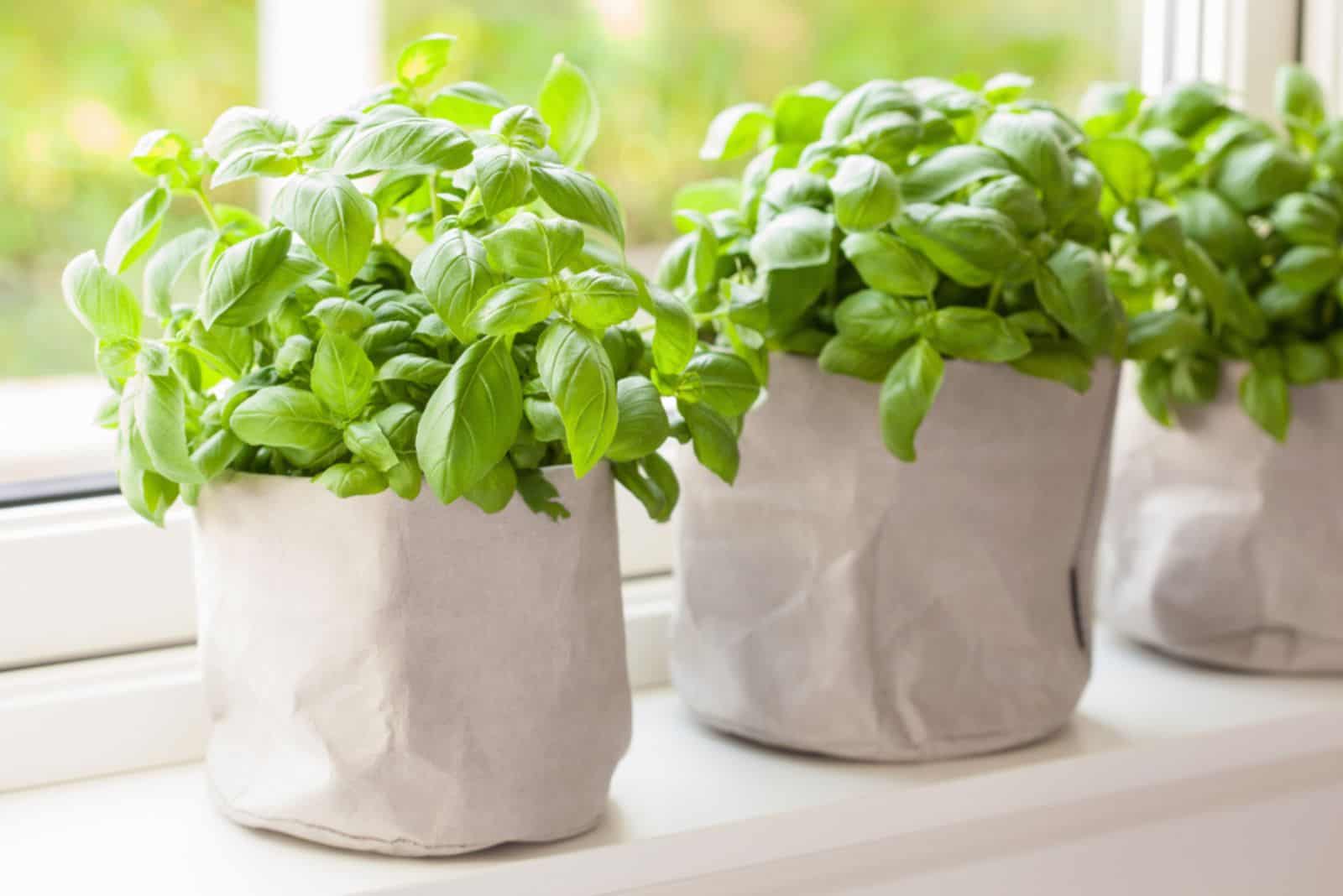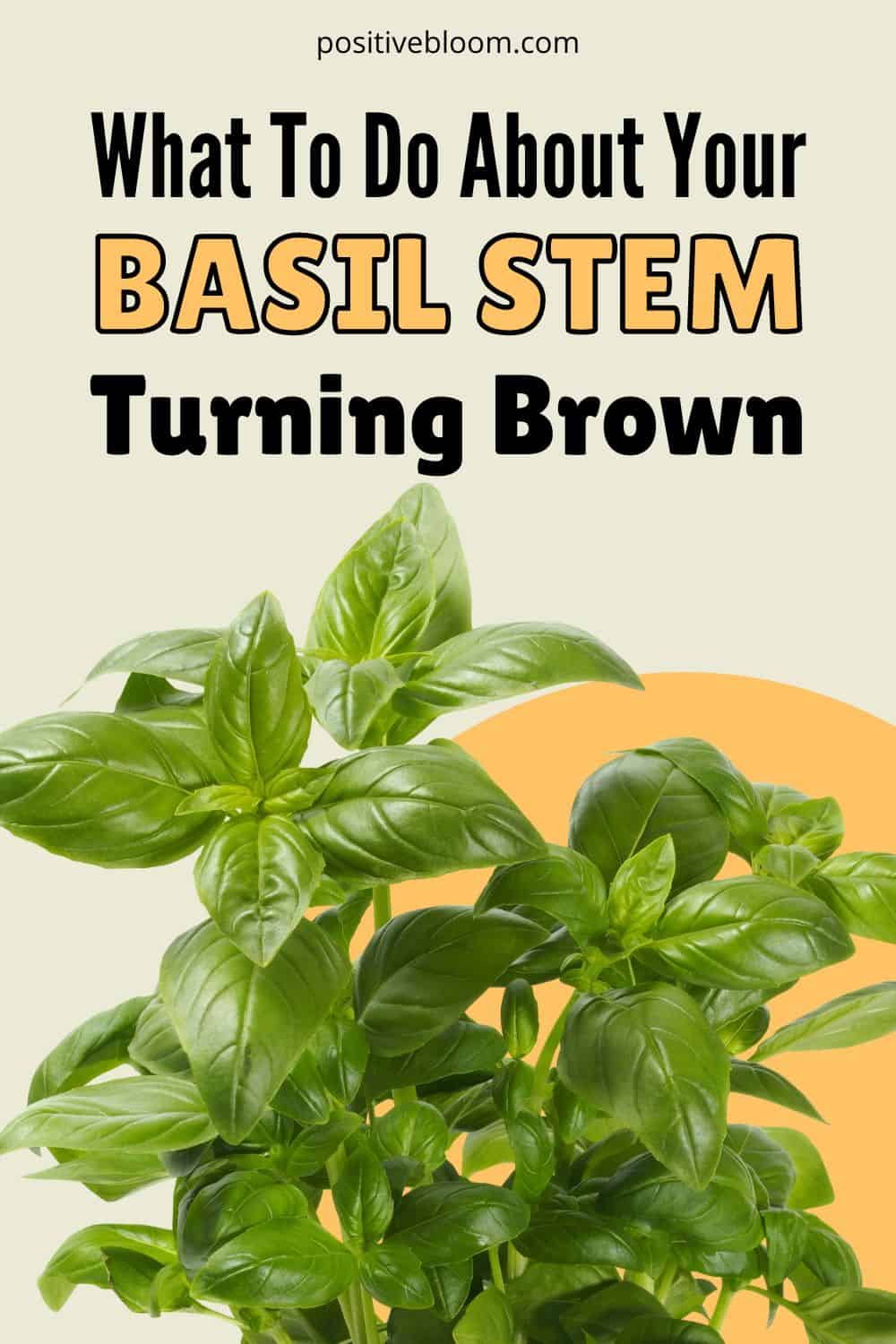The basil plant is primarily grown and used as a spice, and many chefs use the lovely basil leaves as a garnish!
Otherwise known as Ocimum Basilicum, the Basil plant belongs to the Mint family, which consists of many delicious herbs frequently used for teas and meals.
This plant is relatively easy to take care of — it is one of the herbs that can be grown in a pot. Basil can be cultivated almost anywhere, though I prefer to keep it somewhere warm with lots of sunlight. If you don’t prune it enough, it will grow out of the pot, which is why it needs frequent harvesting.
Even though it is a hardy plant, it can still be affected by inadequate growing conditions, pests, and fungal infections. One of the outcomes is the basil stem turning brown, yellowing leaves, and the plant wilting.
Keep reading to find out more about these issues and also how to fix them!
Basil Stem Turning Brown: Problems & Solutions
Basil is used to make essential oils and is rich in nutrients that are very good for our health, including minerals, vitamins, and antioxidants. Stress reduction, blood sugar control, cancer and heart disease prevention, reduced inflammation, and defense against viral infections are a few advantages of eating basil (aside from making every meal yummier!).
Basil is low-maintenance, so you won’t have to spend much time and energy on plant care. However, even the toughest houseplants can be attacked by annoying critters — they are a literal nightmare for every plant lover and gardener.
Basil has lovely green leaves and stems. So, when you see that your indoor basil has woody stems, you can assume that there is something wrong with it. Brown spots on stems and leaves are usually indications of pest infestations.
Basil plant stems turning black and rotting means that there might be fungal infections, and these can completely ruin your plant. Therefore, let’s discuss fungal infection first.
Fungal Diseases
Four diseases – fusarium wilt, downy mildew, root rot, and leaf spot – can cause woody basil plants and stem rot.
Let’s look at them in more detail.
Downy Mildew
When it comes to basil, downy mildew is the most prevalent disease. Yellow leaves that eventually turn brown will be the first sign that your basil has downy mildew.
Additionally, you’ll see that your basil plant is wilting, drooping, and producing fuzzy growth on the undersides of its leaves.
This disease also spreads swiftly and is easily contracted by other plants.
Why does downy mildew develop? The likelihood of contracting this disease rises if your basil is growing in a humid environment.
Fusarium Wilt
Basil can suffer from fusarium wilt, a disease caused by the fungus Fusarium oxysporum. Even if your basil has this disease, it may still grow healthily in the beginning stages. Through the roots of basil plants, the fusarium infiltrates the water-transporting xylem tissues that carry nutrients and water. In response, the plants produce resinous gum to contain the disease.
The plant stops growing and begins to wilt once it reaches a height of around 12 inches. Woody basil stems, yellow leaves, and possible leaf drop are other signs of this disease.
The biggest issue with this disease is how quickly it spreads, which puts other plants in danger because the spores are airborne.
If you are growing basil outdoors, you will need to remove it from the soil and wait a few years before planting it again because it remains there for a very long period.
The pathogen may also be spread by seeds; therefore, you should be more careful when buying basil seeds.
Root Rot
One of the main issues that arises from overwatering plants is root rot.
Root rot is a fungal disease that is caused by many fungi species, usually Pythium, Aphanomyces, and Phytophthora. This disease is primarily caused by overwatering because the moist and warm soil is the perfect environment for critters.
The first part of the plant attacked is the roots, which is why the perfect solution for this issue is repotting. When repotting, you will have to get rid of all mushy and decaying roots.
If left untreated, fungi can spread to the top of the plant, which might be one of the reasons your basil plant is wilting. Smelly soil is also a sign that your plant might be suffering from root rot.
Leaf Spot
This is a different fungal disease that is brought on by the Xanthomonas or Pseudomonas species. Check for this disease if you observe dark spots, wilting, or dropping leaves because it affects the leaves, and might even spread to the stems.
Wet leaves after watering are the main causes of leaf spot disease.
How To Get Rid Of Fungal Diseases
Unfortunately, there is no treatment for downy mildew and fusarium wilt. You should focus on restoring the soil because the fungi that cause these diseases last a long time in the soil.
The plants that have these diseases will need to be thrown away.
The best course of action is to begin growing other types of basil, such as lemon or purple basil.
If you grow basil indoors, throw away the entire plant and the soil; wrap it all up in a paper bag and put it in the garbage.
In case you are dealing with a mild fungal infection, you can try applying fungicides or neem oil to prevent the spread of the disease. However, it is always better to start growing a new plant. You don’t have to wait for next year’s growing season as these plants are fast growers.
Fortunately, the afflicted leaves can be removed to treat leaf spot disease. Watering at the plant’s base is the most effective strategy to fight against this disease. Always keep in mind that the leaves should be dry!
Be careful of your watering habits as well — you can even let the soil completely dry out in between waterings. Remember that soggy soil is no good!
Read also: Copper Fungicide Vs Neem Oil: What’s The Better Option?
Pests
We are not the only ones that find these herbs tasty, as evidenced by all the annoying pests that also like munching on delicious basil leaves! Common pests that attack basil are spider mites and aphids.
Spider Mites
The bad news is that spider mites enjoy hot weather just as much as basil does! When spider eggs are present in the soil of the plant, they can survive in arid conditions.
Without a magnifying glass, finding spider mites is practically impossible. Look for tiny black spots on your basil, especially on the undersides of the leaves.
Additionally, if the basil plant begins to wilt and the leaves have webbing on them, you likely have a spider mite infestation.
Aphids
The microscopic pests known as aphids frequently leave sticky residue on the leaves. Despite their small size, these vile critters severely harm basil.
Leaf yellowing and curling are accompanied by a sticky substance. Wilting is frequently the outcome of severe infestations.
How To Get Rid Of Pests
Get rid of the pests as soon as possible to prevent them from taking over your plants! You can employ a variety of homemade remedies to get rid of aphids and spider mites.
To start, try picking as many aphids or spider mites off with your hands as you can. This might be the only thing you need to do if the infestation isn’t severe.
There are alternative ways to collect the bugs if you don’t like manually plucking them off and crushing them. I realize it’s not fun.
If you find that your basil has spider mites, moist soil should keep them away. You might be able to get rid of these pests by watering frequently, but be cautious not to overwater your basil.
If you grow basil outside, try using a garden hose to flush off the bugs. If you spray them off during the first few days, you can completely get rid of these pests.
Neem oil and insecticidal soap are both highly effective against pests.
Try using chemical insecticides if none of these approaches succeed.
Inadequate Temperature & Light Conditions
Basil can adjust well to various growth environments, but it is sensitive to sudden temperature fluctuations.
Your basil will wilt and turn brown if the temperature at night or during the day unexpectedly drops or rises.
Wilting, leaf curl, brown stems, and dark leaf edges are all signs of too low temperatures. This frequently happens in the winter when there is a significant change in temperature between day and night.
Keep in mind that basil plants have thin roots, so even a small amount of frost could cause them to quickly die, even if you leave it exposed for a small amount of time.
Inadequate light level is another common reason for stems turning brown and wilting. Although basil is a sun-loving plant, too much direct sunlight can harm the leaves and cause them to wilt.
Solution
Keeping the thermostat at 70 degrees Fahrenheit is the best strategy to address temperature issues. Basil won’t be harmed by slightly warmer or lower temperatures. Your basil will be at risk if the temperature falls below 50 degrees Fahrenheit.
To keep your basil warm throughout the cooler months, I advise applying mulch to the soil.
If you are growing basil indoors, keep the pot off window ledges in the summer because it is simpler to control the temperature and light there. You can also invest in some grow lights.
Also, keep your basil away from radiators, vents, fireplaces, and air conditioners.
What To Do To Avoid Your Basil Stem Turning Brown And Wilting
If you want to keep your plant happy and healthy, the best thing that you can do is strictly follow the plant care guide.
Here is a quick overview of what you should do:
• Soil requirements — This plant needs moist, well-draining soil. To ensure proper nutrition, I advise adding mulch or compost.
• Water requirements — If you grow basil indoors, keep in mind that it will require more frequent watering; provide about an inch of water each week.
• Temperature requirements — Maintain a temperature of at least 50 degrees Fahrenheit. The optimal time to grow basil is when the temperature reaches at least 70 degrees.
• Humidity requirements — For basil plants, a humidity level of about 60% is excellent. Check the soil frequently because this plant’s watering requirements can fluctuate in high humidity.
• Fertilization requirements — There is no need for additional food if you plant basil outside. If you do decide to fertilize it, use a liquid fertilizer that is balanced and apply it once a month during the growing season. Prior to applying any kind of fertilizer, make sure to read the instructions and pay close attention to the dosage.
• Pruning — To promote new development, you can remove the higher leaves (starting at the plant’s tips).
• Harvesting — Harvest basil once a month in the summer to get it fresh. Then add it to your favorite dishes or freeze it for the winter.
To Sum Up
Basil plants are primarily grown for culinary purposes, though their lovely leaves will serve as a great garnish or even in decorating landscaping as well!
Even though this plant is hardy and quite easy to take care of, you could run into some issues, such as the basil stem turning brown and wilting. It ultimately comes down to plant care, so even if you are having pest and fungi issues, these little critters won’t attack a plant that is happy and healthy — and if they do, they won’t have any luck!
If you do grow a healthy basil plant, it is also pretty important to store it properly. You can either keep your basil leaves in olive oil, dry them out, or simply put them in the fridge (though the stems are going to turn brown too).
I hope this article was helpful.
Until next time!
Like this post? Share or pin it for later!

